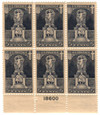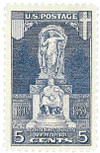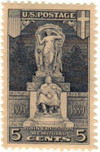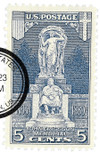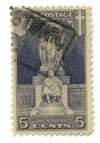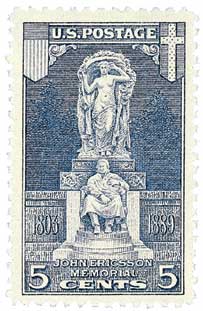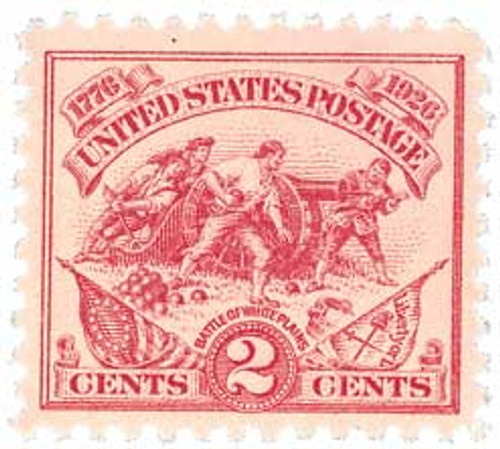
# 628 - 1926 5c Ericsson Memorial
1926 Ericsson Memorial Issue
5¢ Statue of John Ericsson
First Day of Issue: May 29, 1926
First City: Washington, D.C., New York, NY, Chicago, IL, Minneapolis, MN
Quantity Issued: 20,280,000
Printing Method: Flat Plate
Perforation: 11
Color: Gray Lilac
Birth of johan ericsson
From a young age, Ericsson and his brother Nils showed an aptitude for canal building. Their talent was discovered by the architect of the Gota Canal, who hired them as cadets of mechanics in the Royal Navy.
By the time he was 14, Ericsson was working as an independent surveyor. Three years later he joined the Swedish Army. He reached the rank of lieutenant and continued to work as a surveyor. When he wasn’t working, Ericsson built a heat engine that used the heat from a fire instead of steam to function. Ericsson soon realized he wanted to dedicate his time to building things and resigned from the army. He went to England in 1826 but his heat engine didn’t gain the support he had hoped.
While some of Ericsson’s inventions around this time failed, some proved successful. He invented a surface condenser that enabled steamers to recover freshwater for its boilers while in the ocean. He also created a pressure-activated fathomer. However, these were considered minor successes and Ericsson spent some time in debtors’ prison.
1926 Ericsson Memorial Issue
5¢ Statue of John Ericsson
First Day of Issue: May 29, 1926
First City: Washington, D.C., New York, NY, Chicago, IL, Minneapolis, MN
Quantity Issued: 20,280,000
Printing Method: Flat Plate
Perforation: 11
Color: Gray Lilac
Birth of johan ericsson
From a young age, Ericsson and his brother Nils showed an aptitude for canal building. Their talent was discovered by the architect of the Gota Canal, who hired them as cadets of mechanics in the Royal Navy.
By the time he was 14, Ericsson was working as an independent surveyor. Three years later he joined the Swedish Army. He reached the rank of lieutenant and continued to work as a surveyor. When he wasn’t working, Ericsson built a heat engine that used the heat from a fire instead of steam to function. Ericsson soon realized he wanted to dedicate his time to building things and resigned from the army. He went to England in 1826 but his heat engine didn’t gain the support he had hoped.
While some of Ericsson’s inventions around this time failed, some proved successful. He invented a surface condenser that enabled steamers to recover freshwater for its boilers while in the ocean. He also created a pressure-activated fathomer. However, these were considered minor successes and Ericsson spent some time in debtors’ prison.



